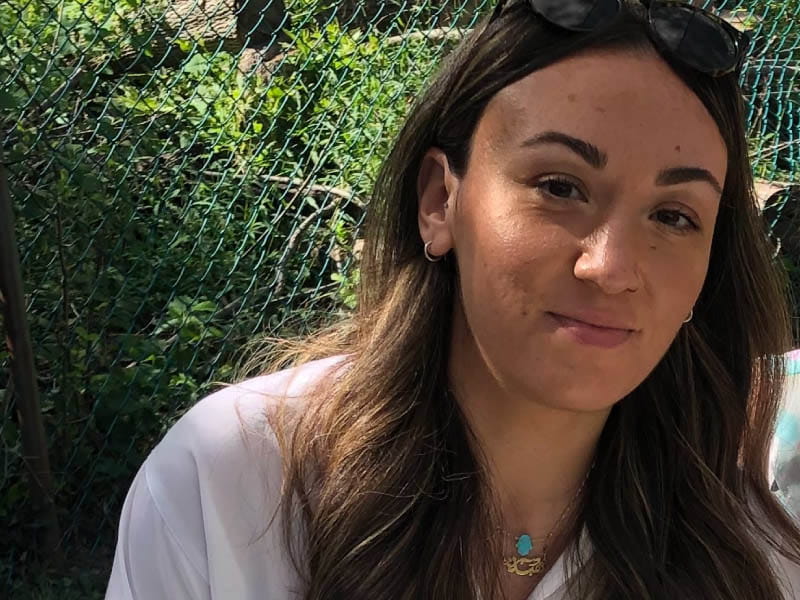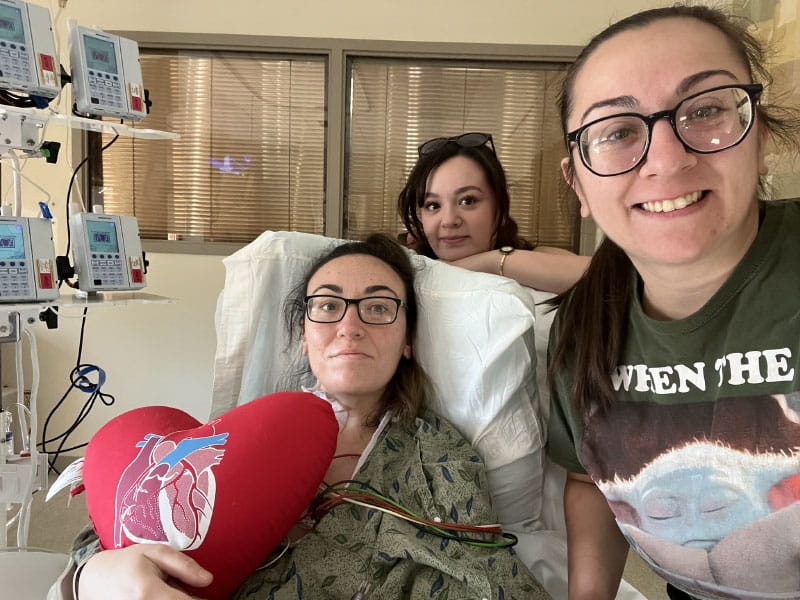Rare heart condition ended her marathon training. Now she aims to run even farther.
By Emily Halnon, American Heart Association News

Hiba Jelahej was standing in her kitchen in Chandler, Arizona, last summer when everything around her started spinning. She blacked out and fell to the ground.
When she came to, she brushed it off. She was in the middle of training for a marathon and figured it was from the added stress on her body. Maybe she was dehydrated, she thought. Then 30, she'd never dealt with any major health issues. She'd always been fairly active and ate a healthy diet. She even studied nutrition in college.
But then she fainted again while at work just days later.
And then again.
After a fourth fainting spell within one month, Jelahej was rushed to the emergency room.
The ER doctor looked at her bloodwork and said, "Something is going on with your heart. It's critical you get evaluated by a cardiologist."
An invasive cardiologist put her through a series of stress tests on a treadmill to see how her heart responded. She had a test to examine the electrical signals from the heart. Then he did a type of test that involved putting a probe down her esophagus to get a clearer image of her heart through sound waves.
It was that final test that found the source of the problem: an extremely rare heart condition called a quadricuspid aortic valve.
A normal heart has three cusps, or leaflets, in the aortic valve. Some people are born with two cusps; that condition is called bicuspid aortic valve and it's among the most common congenital heart defects. Far more unusual is what Jelahej has: four cusps, known as a quadricuspid aortic valve, or QAV. Less than 0.05% of the global population is diagnosed with this congenital defect.
The aortic valve is one of the primary structures that ensures blood leaves the heart, and the cusps help regulate that flow. Having an extra cusp can cause disruptions to the blood flow. Jelahej's doctor thought it was the root cause of her fainting spells. She also had an irregular heartbeat that he believed could be linked to QAV.
But getting a diagnosis didn't lead to a simple solution.
Her medical team decided to insert a mechanical valve to improve the blood flow to and from her heart, along with a pacemaker to regulate her heartbeat. The pacemaker was not part of her original treatment plan, but her doctors determined she needed one after she had to spend six days in the intensive care unit due to complications from open-heart surgery.
Jelahej ended up needing five different heart procedures, including some emergency ones, because she kept experiencing complications. She dealt with fluid around her heart, a pacemaker failure and uterine bleeding caused by blood-thinning medication.
"I kept hearing that I'm an extremely rare patient with a rare condition and my medical team can't just treat me like anyone else," she said. "They had very limited references to work with."
Though her road to recovery was longer than expected, Jelahej was determined to persevere with as much positivity, determination and purpose as she could. She wanted to get back to running and find ways to hold onto things that made her life good and fulfilling.
"When Hiba had several setbacks in her recovery, requiring additional procedures, I thought for sure that each new one may cause her to become frustrated," said Melissa Meck, Jelahej's clinical pharmacist. "But they never did. Hiba was always strong and stayed excited to get back to living life the way she enjoyed it. Hiba didn't want to let her heart operations be big setbacks, but instead, opportunities to learn, grow and persevere."

After her fifth procedure, Jelahej was able to finally start cardiac rehabilitation and work on getting back to the activities she loves, including running.
She started with just a few steps. Then a mile or two. She's slowly building toward training for a full marathon. She has her sights set on a fall or winter marathon this year, and hopes to eventually run ultra-distance races, events that are even longer than a marathon.
She visualizes running those distances when she needs a boost to push through medical hiccups and the many frustrating challenges of a long and slow recovery from her heart issues.
"I want to run ultra-distance races someday and show others that we can overcome setbacks to keep going and keep doing more with our lives," she said.
"My journey serves as a reminder that life is simply a test – a test of gratitude. It is our faith, our perseverance and our commitment to our dreams that truly define us. Today, running 2 miles feels like I'm running 200. But my goal remains and, one day, I will become an ultra-runner. With these revelations, I am running toward life's fleeting moments. I am running on God's path."
Stories From the Heart chronicles the inspiring journeys of heart disease and stroke survivors, caregivers and advocates.





